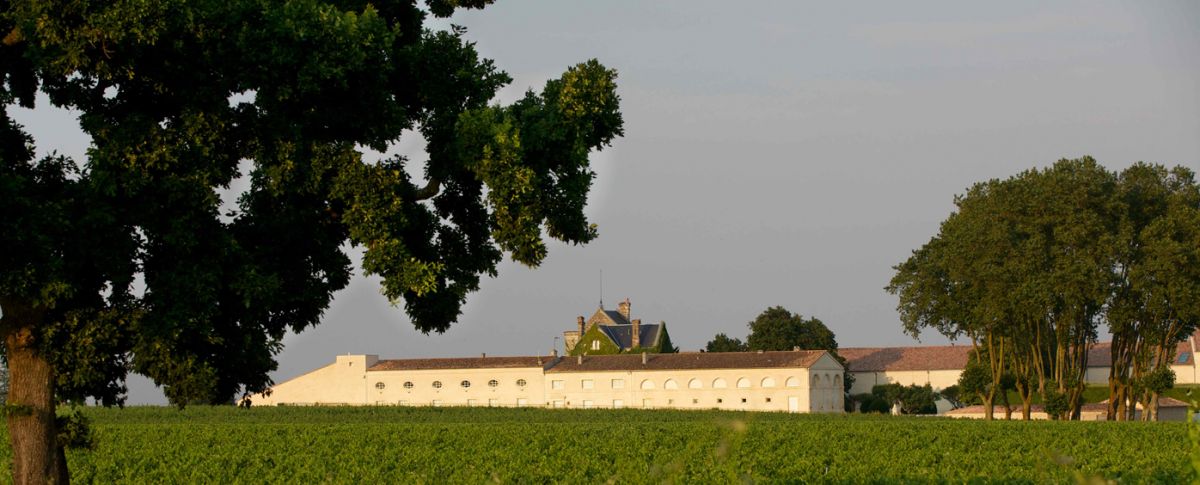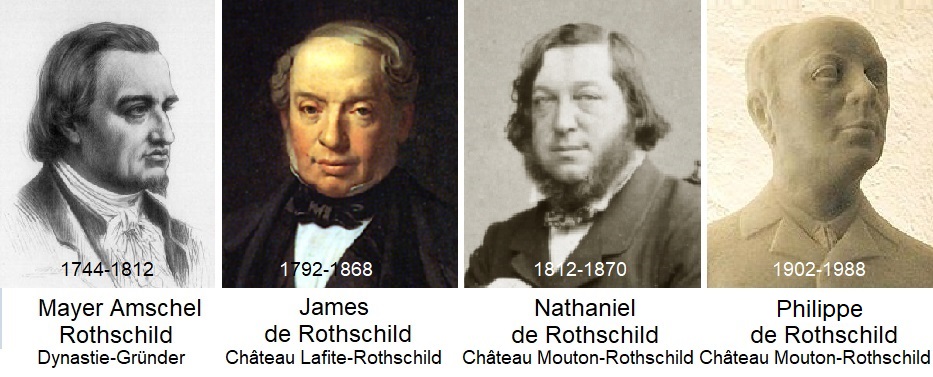The second wine of Château Mouton-Rothschild; see there.
Château Mouton-Rothschild
The famous vineyard is located in the north of the municipality of Pauillac in the area of the same name in the Médoc (Haut-Médoc, Bordeaux). Château Lafite-Rothschild is located directly adjacent to it. Mouton is the French word for "sheep" (ram) and a ram's head is also the logo of the house - a gold one hangs in the entrance hall of the château. However, the name is actually derived from "Mothon", which means "hill" or "elevation". The origin of the estate is a plot of land called "Clos de Mouton" owned by the notary Jacques de Ségur (+1691). This famous noble family owned huge estates, including the predecessors of the three wine estates Château Latour, Château Lafite-Rothschild and Château Mouton-Rothschild. The grandson Nicolas-Alexandre de Ségur (1697-1755) drew the final line between the Lafite and neighbouring Mouton parts, which are fundamentally different in terms of terroir and therefore also in terms of wine style.

Château Brane-Mouton 1725
Around 1725, the Mouton part was sold to Baron Joseph de Brane and named "Château Brane-Mouton". It remained in the possession of this family until 1830, when it was sold to the Parisian banker Isaac Thuriet for 1.124 million francs (although some sources cite 1825 and the banker is also given as Thuret). On 11 May 1853, Thuriet sold the estate, which at the time comprised 35 hectares of vineyards, to Baron Nathaniel de Rothschild (1812-1870) from the English branch of this great family. The baron had moved from London to Paris three years earlier with his wife Charlotte (a cousin) to work in the bank of his father-in-law and uncle, Baron James de Rothschild (1792-1868). Baron James then bought Château Lafite 15 years later and added the Rothschild name.

Château Mouton-Rothschild - Bordeaux Classification 1855 - Deuxième Grand Cru Classé
Baron Nathaniel gave his new property the name "Château Mouton-Rothschild". At that time, it only consisted of a few barns and halls; a château did not yet exist. In the 1855 Bordeaux classification, the estate was "only" awarded the second rank of Deuxième Grand Cru Classé. However, the title "Premier des Seconds" (First of the Second) was added as a "consolation", so to speak. Nathaniel was succeeded by his son James (1844-1881), who began to build a stately home. It was only completed by his widow Thérèse. James Rothschild was followed by his son Henri (1872-1947), who was less interested in wine than in art. The estate was run down during his time, which was also due to mismanagement and dishonest activities by employees. His son Philippe de Rothschild (1902-1988) had spent some time on the estate as a teenager during the First World War (1914-1918) and took a liking to country life. He drew his father's attention to the shortcomings and, much to his delight, was put in charge of the estate.
Entry of Baron Philippe de Rothschild in...
Voices of our members

I have great respect for the scope and quality of the wein.plus encyclopaedia. It is a unique place to go for crisp, sound information on terms from the world of wine.
Dr. Edgar Müller
Dozent, Önologe und Weinbauberater, Bad Kreuznach